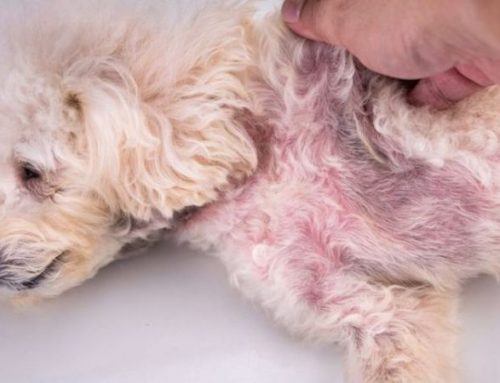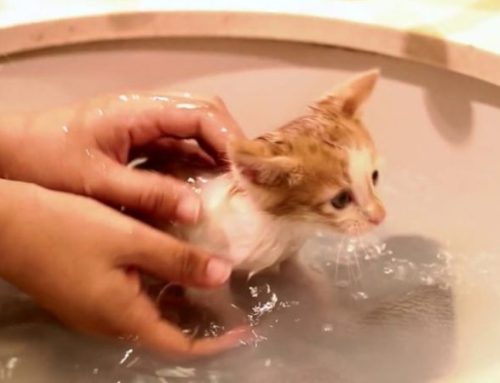Even the most fastidious feline can run into trouble that a quick grooming session can’t fix think sticky messes, dirt-laden adventures, or pesky fleas. But if your cat recoils at the sight of water, the thought of giving them a bath can feel like preparing for battle.
Don’t worry! With the right approach, a few clever tricks, and a bit of patience, you can keep your cat clean without turning bath time into a full-on wrestling match. Here are seven genius tips to bathe your water-averse kitty, avoid scratches, and keep yourself mostly dry.
Understand Why Cats Hate Water
If you’ve ever tried to bathe a cat, you know it can feel like wrestling a tiny, furry ninja. The truth is, most cats aren’t actually haters of water—they’re cautious, sensitive, and creatures of habit. Their reluctance often comes from a mix of past experiences, the physical discomfort of wet fur, and instinctive survival behaviors.
From sudden splashes that trigger fear to heavy, waterlogged fur that feels awkward and cold, there are plenty of reasons your feline friend might give you the stink-eye at bath time. By understanding these reasons, you can approach bathing or even water exposure in general with more patience, care, and fewer scratches.
Pre-Bath Prep: Setting the Stage for Success
Tip 1: Tire Them Out – The Calming Pre-Game
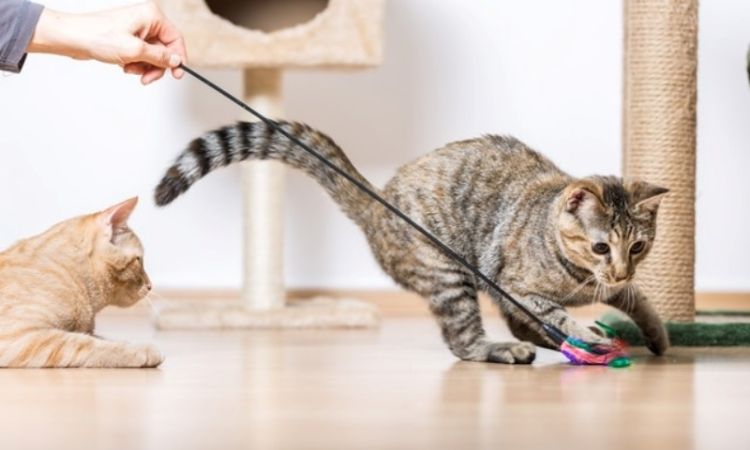
Cats are naturally energetic and can become hyperactive when faced with new or stressful experiences. Before attempting a bath, engage your cat in an energetic play session lasting 15 to 30 minutes. Use wand toys, laser pointers, or feather teasers to mimic hunting behaviors that encourage running, pouncing, and chasing. The goal here is simple: a tired cat is a calmer cat. After expending their energy, your feline friend is less likely to dart, scratch, or resist during bath time. This “pre-game” play also allows your cat to associate positive experiences with the period leading up to the bath, rather than only connecting it with stress.
Tip 2: The Grooming Essential – Preventing Matting

Before introducing water, a thorough grooming session is critical. Brush your cat’s coat carefully to remove loose hair, tangles, and small mats. Cats with long or dense fur are particularly prone to matting, and wet fur exacerbates the problem. Mats can tighten when wet, causing discomfort or even pain, and make the bathing process far more stressful. Pre-bath brushing also reduces the amount of hair that ends up in your sink or bathtub and helps prevent hairballs, keeping both your cat and your home cleaner. This simple step ensures your cat’s coat is prepared for washing, allowing the shampoo to work more effectively and reducing post-bath grooming time.
Tip 3: Safety First – Protect Yourself
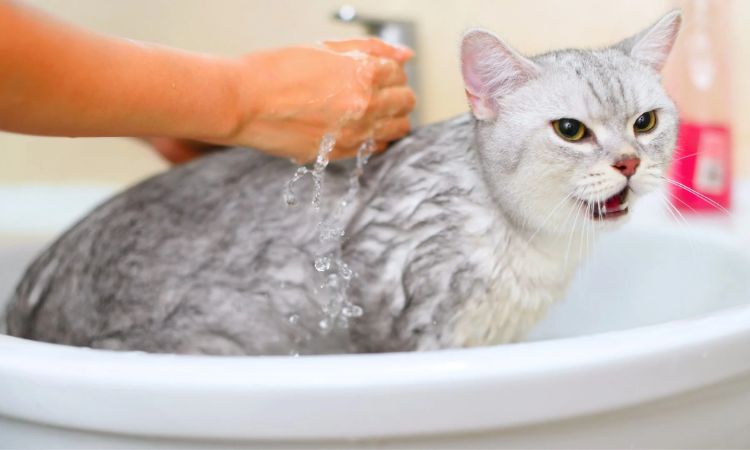
Even the calmest cats can become unpredictable during a bath, so protecting yourself is essential. Start by trimming your cat’s nails a day or two before bath time. If your cat is particularly squirmy or prone to scratching, consider using soft nail caps to reduce the risk of injury.
Next, dress for protection. Wear thick, long-sleeved clothing preferably a shirt or hoodie made of dense fabric—to shield your arms from accidental scratches. Keep your movements slow and deliberate, as sudden gestures can trigger defensive reactions. Some owners even use gloves for extra protection, though many cats feel less threatened when your hands are bare. The combination of clipped nails, protective clothing, and careful handling dramatically decreases the chance of injury and allows you to focus on your cat’s comfort and safety during the bath.
The Bathing Process: 7 Genius Tips to Stay Dry
Tip 4: Environment is Everything – The Fear-Free Zone
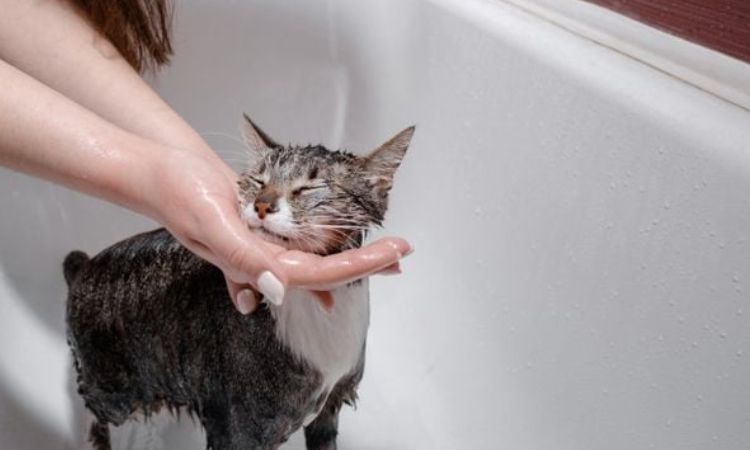
Cats are highly sensitive to their surroundings, and a chaotic or unfamiliar environment can trigger panic. To create a calm, controlled space, avoid using a large bathtub that may make your cat feel trapped or overwhelmed. Instead, a small sink or a shallow plastic tub works best, giving your cat a cozy, confined area where they can feel somewhat in control.
Room temperature is equally important. Ensure the room is comfortably warm and fill the sink or tub with lukewarm water—too hot can scald, and too cold can be shocking and uncomfortable.
Noise control also plays a major role in keeping your cat relaxed. Prepare all supplies beforehand, from shampoo to towels, and avoid letting running water roar from a faucet, which can startle your cat. A calm, quiet environment sets the stage for a much smoother bath experience.
Tip 5: The Two-Towel Technique – The Security Blanket

Cats often feel vulnerable when wet, which can lead to frantic movements or attempts to escape. Using towels strategically can help them feel safe and limit scratching.
Place one towel on the bottom of the sink or tub to create a non-slip surface for secure footing. The second towel can be used to wrap your cat gently, forming a “cat burrito.” This secures their paws and limits frantic flailing, reducing the risk of injury for both you and your cat. Wrapping them snugly while still leaving their head exposed gives your feline friend a sense of security while allowing you to safely apply water and shampoo.
Tip 6: Use Water Sparingly – Sponge vs. Shower
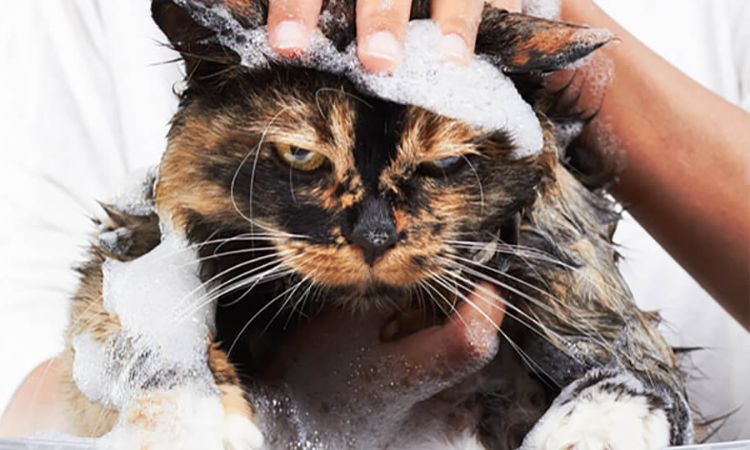
Full immersion is rarely necessary and often causes panic. Instead, use a gentle, targeted approach with water. A damp washcloth or small cup works well for applying water exactly where it’s needed. Avoid using high-pressure showerheads or submerging your cat entirely.
Apply a cat-specific shampoo, taking care to avoid the eyes, ears, and nose. Human shampoos have different pH levels and can irritate your cat’s skin, so always stick to products designed for felines. Work the shampoo in gently with your fingers, giving your cat a soothing massage-like sensation rather than a harsh scrub. This not only cleans them effectively but also turns the bath into a slightly more enjoyable experience.
Tip 7: The Rapid Rinse and Reward – Speed & Distraction

Once the shampoo has worked its magic, rinse thoroughly but efficiently. Lingering soap can irritate your cat’s skin or cause matting, so a quick, complete rinse is key. Continue to avoid spraying directly onto the face or ears.
To keep your cat distracted and reduce stress, place a small plate of a favorite treat nearby like cat-safe peanut butter or Churuso they can lick it during the bath. This positive reinforcement helps them associate bath time with rewards rather than fear.
Immediately after the rinse, wrap your cat tightly in a warm, dry towel to remove excess water. The towel provides both warmth and security, giving your cat a safe cocoon to calm down while you blot their fur dry. Keeping them wrapped also prevents them from darting across the room in a wet, slippery panic.
Post-Bath Care
The “Towel Dry Only” Rule
While it may be tempting to speed up drying with a hairdryer, avoid it at all costs. Most cats are terrified of the loud noise and hot airflow, which can instantly undo all your efforts to keep them calm during the bath. Instead, rely solely on towels. Use a large, soft towel to gently blot and pat your cat’s fur, absorbing as much water as possible. You may need a second towel for extra coverage, especially for long-haired cats. The key is gentle, patient handling—rubbing too aggressively can cause friction, stress, or even tangle the fur.
Warm Hideaway
After towel drying, your cat should be placed in a warm, quiet, and secure area where they can relax undisturbed. This could be a small room free from drafts, with soft bedding or another towel for them to nestle into. Wrapping your cat like a “burrito” in a dry towel can add an extra layer of security, helping them feel safe as they regain composure. Remaining in a cozy, calm space ensures they dry completely without panicking or darting around the house.
The Big Reward
Finally, reinforce the bath experience with a meaningful reward. Offer your cat their favorite treat or meal immediately after the bath. High-value rewards like a bit of Churu, a spoonful of wet food, or a special catnip treat can help your feline friend form a positive association with bath time. Even if they remain wary of water, they’ll remember that good things follow the ordeal, making future baths slightly less stressful for both of you. Positive reinforcement is the final, crucial step in turning bath day from a nightmare into a manageable routine.
Related Reads:



